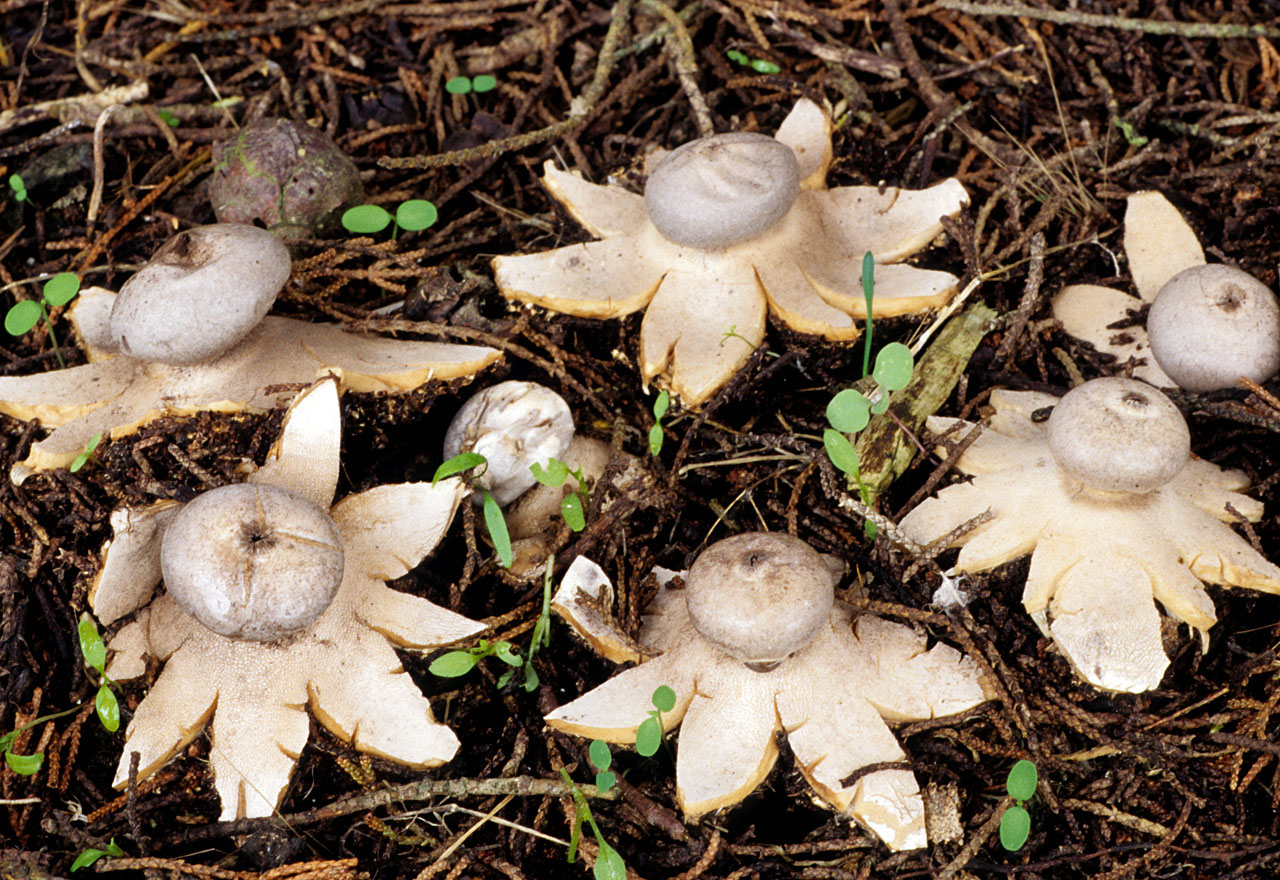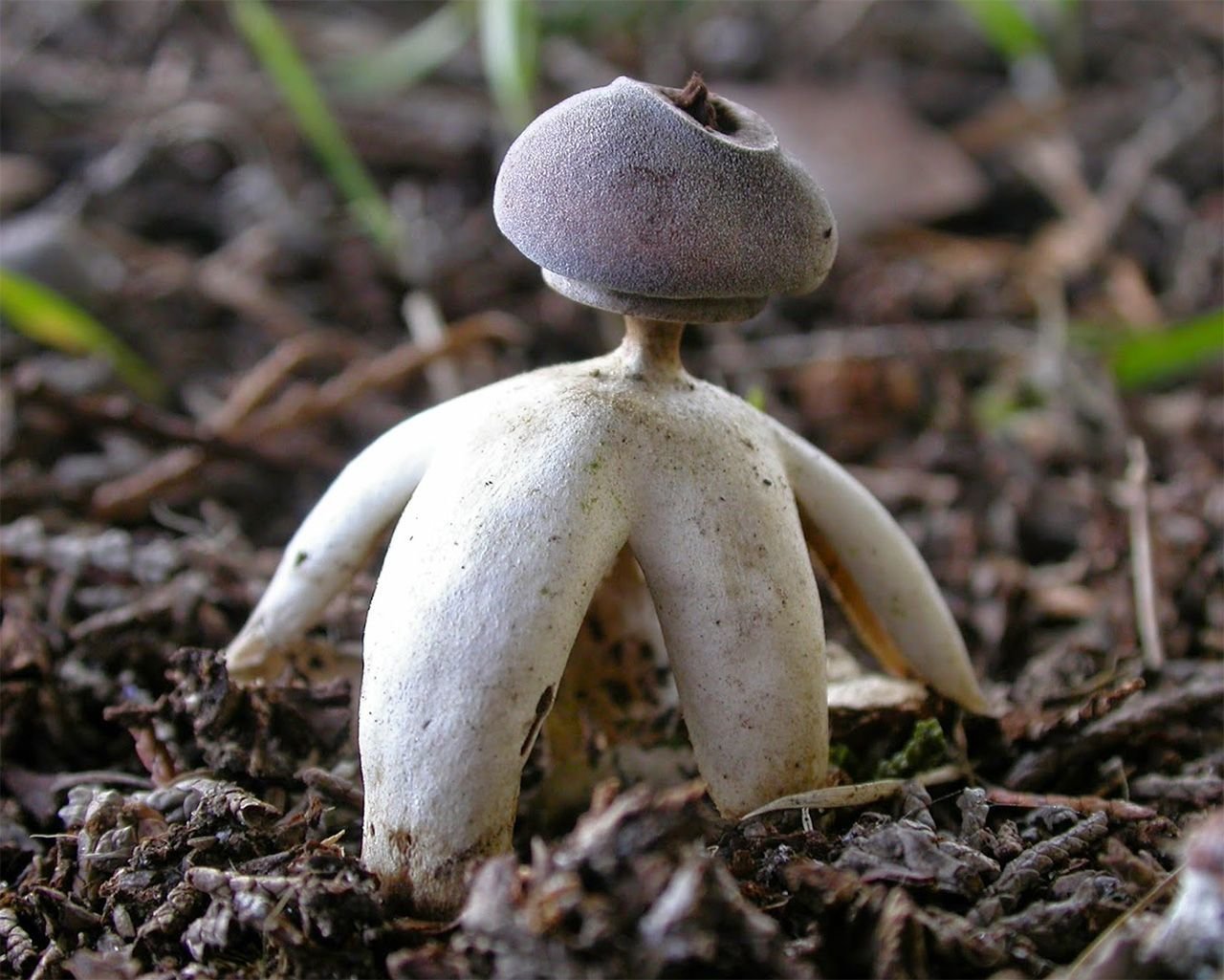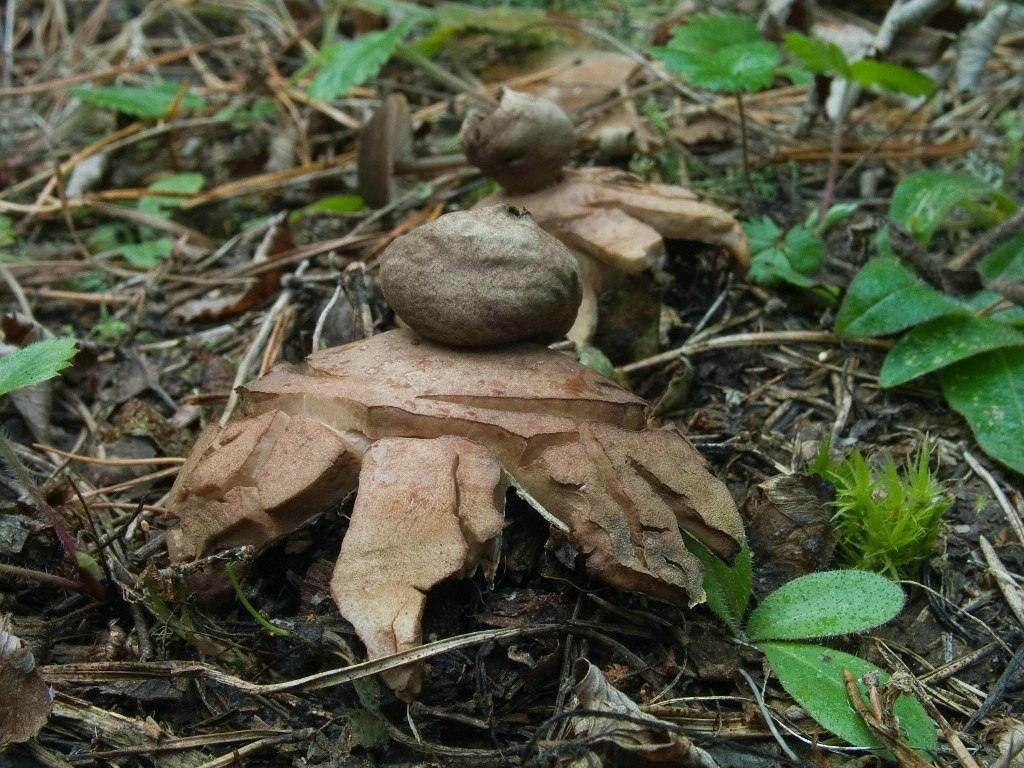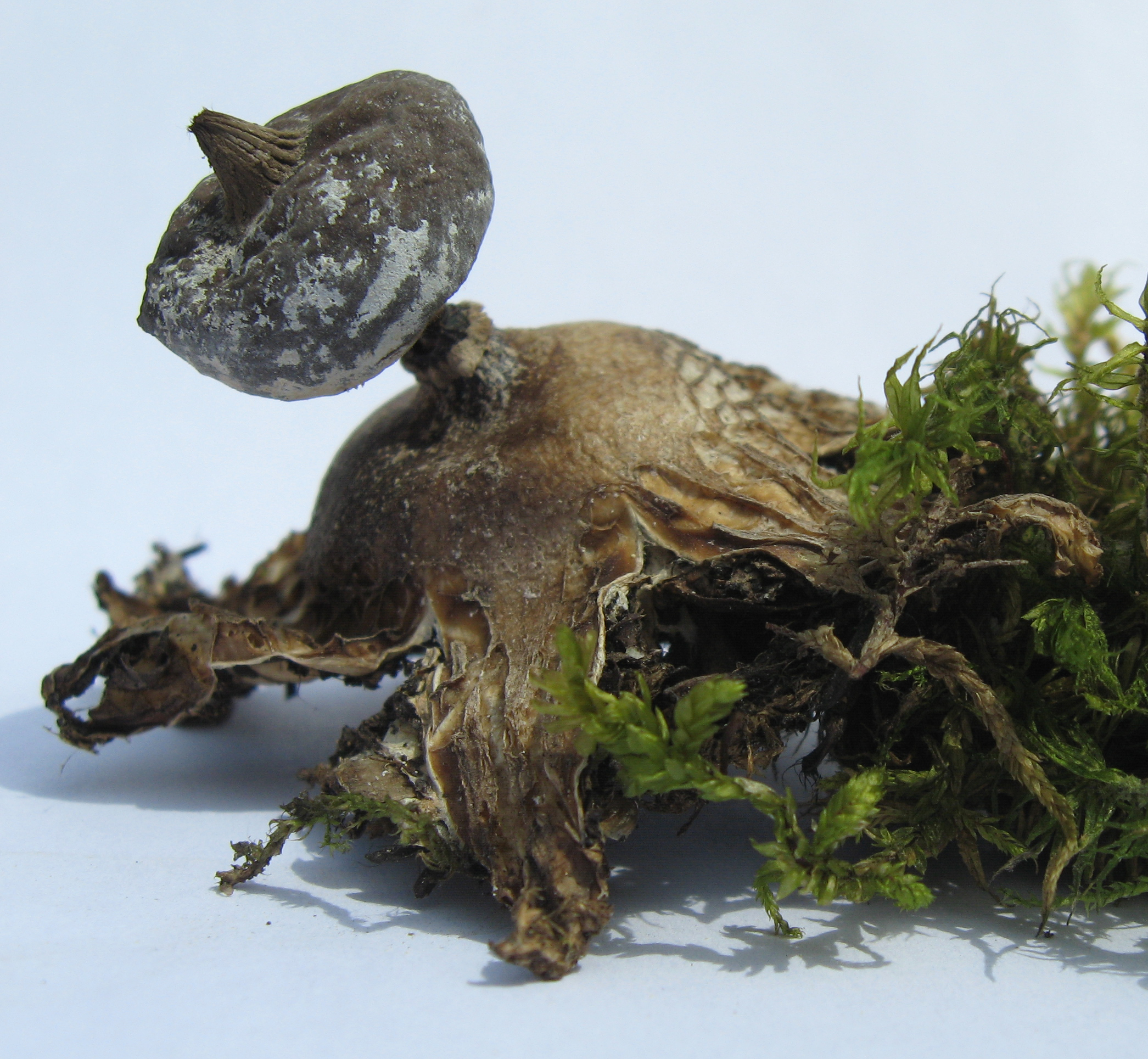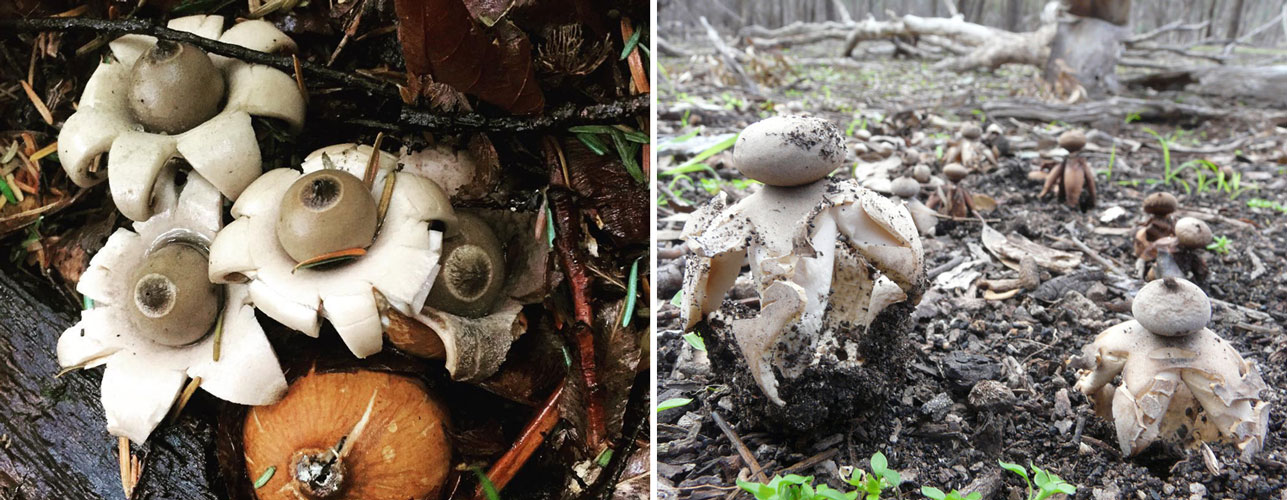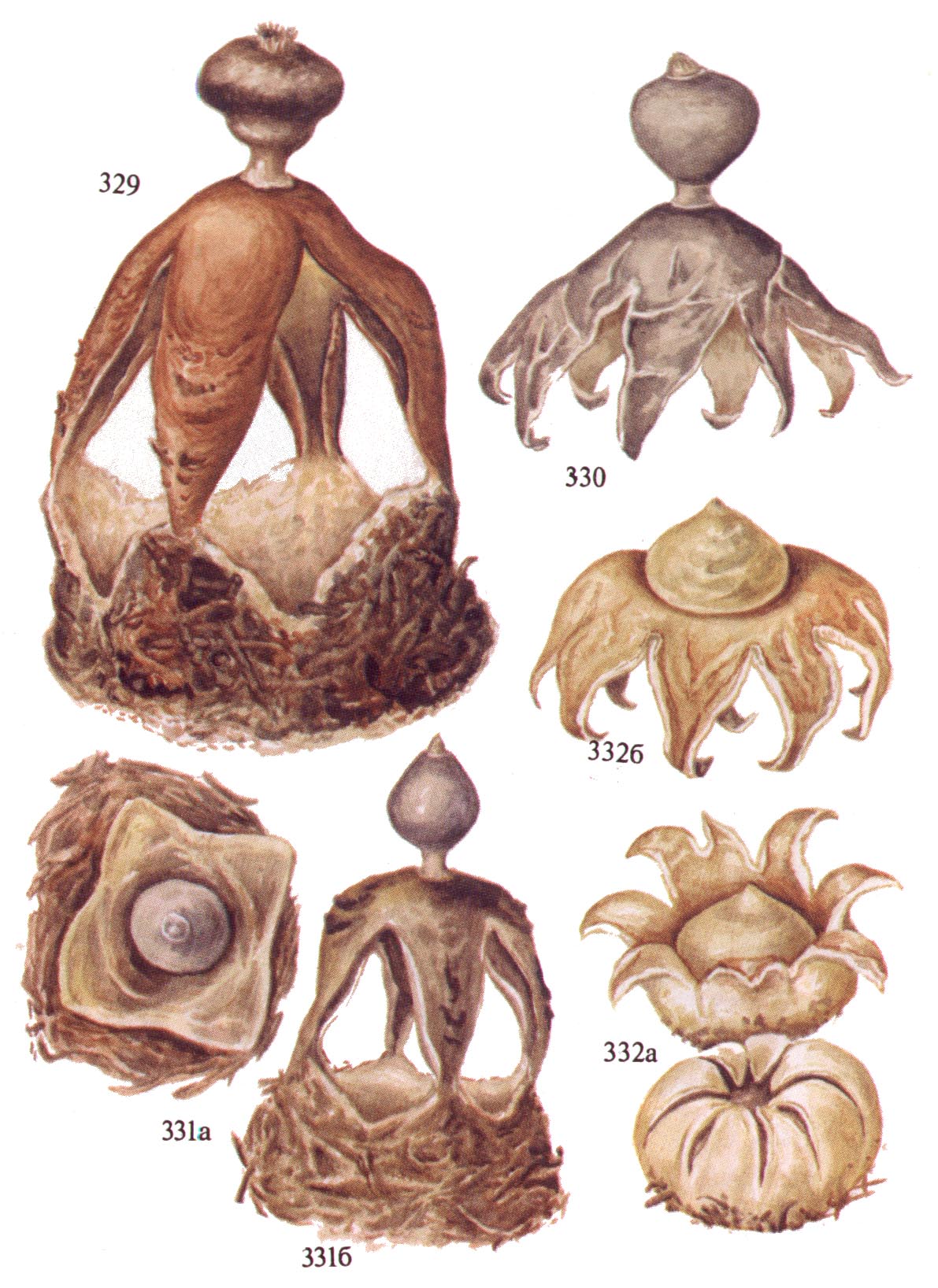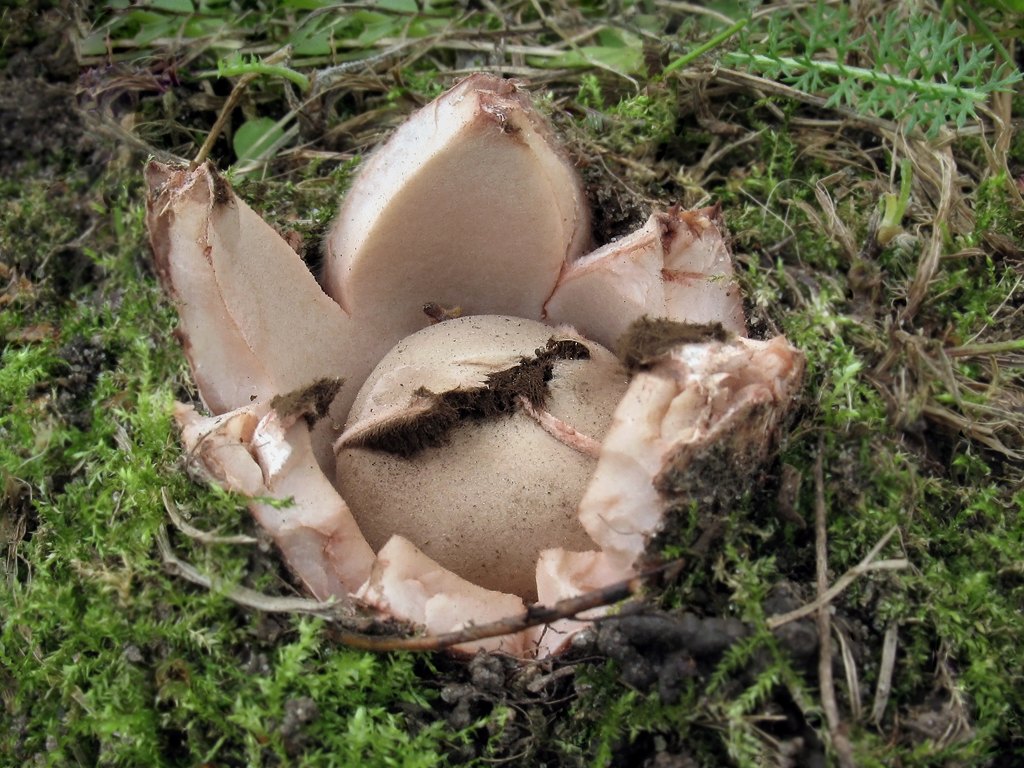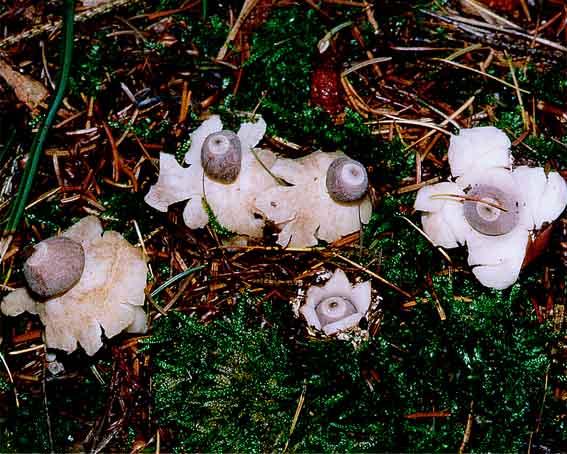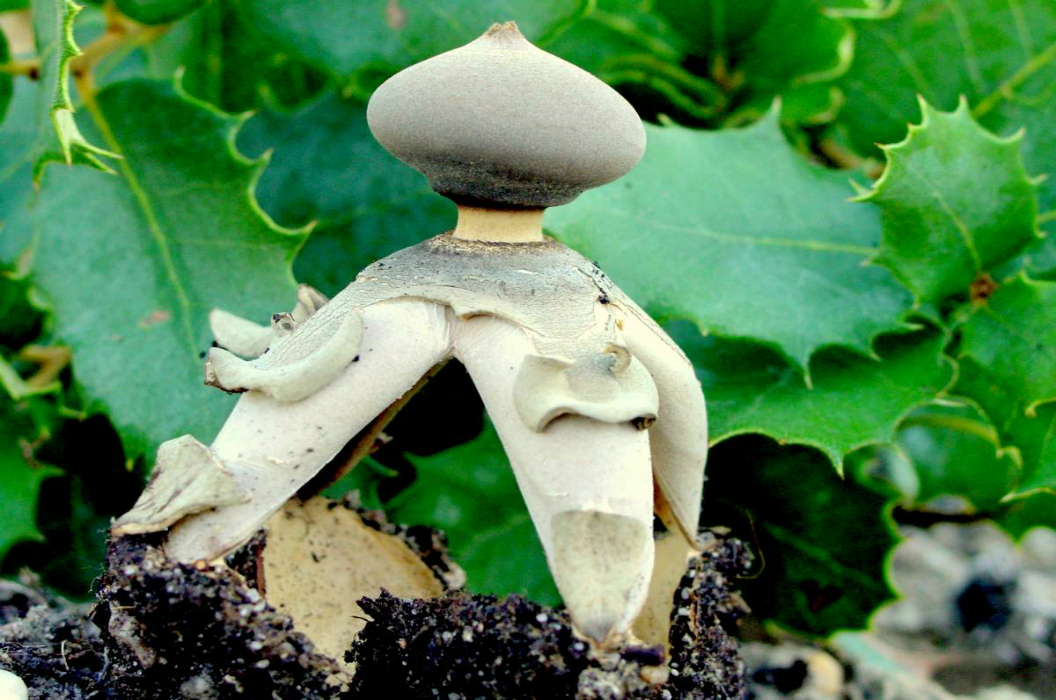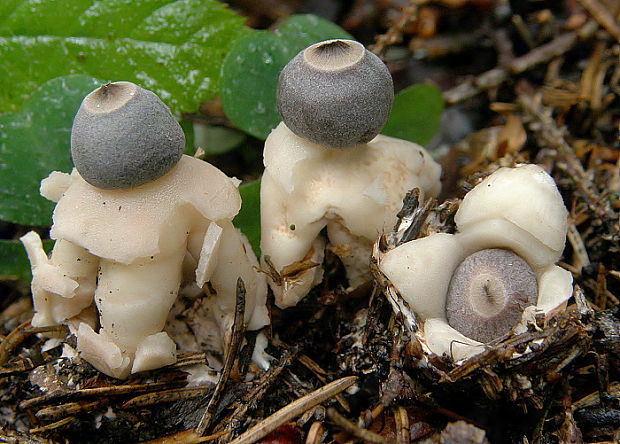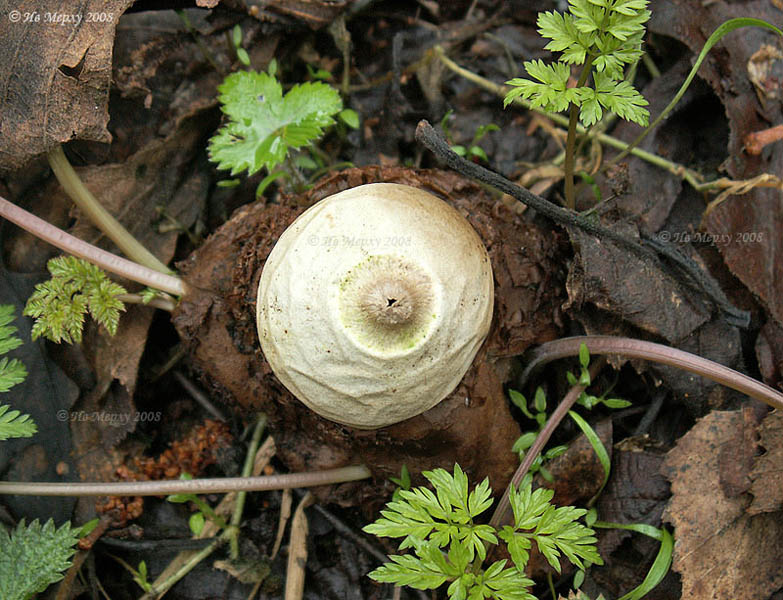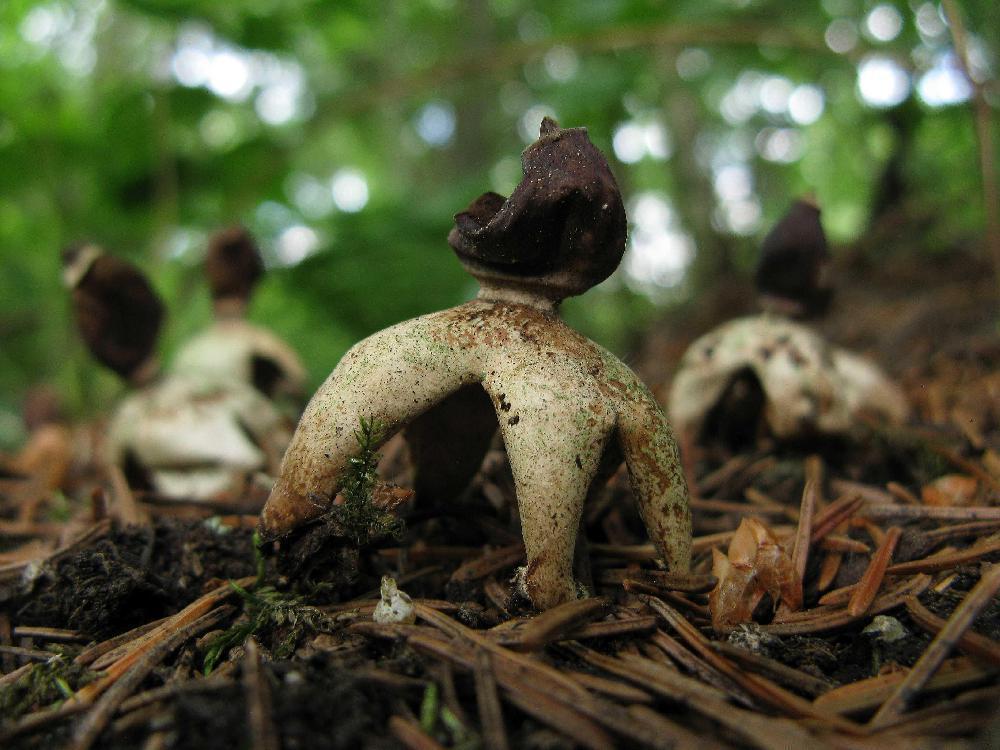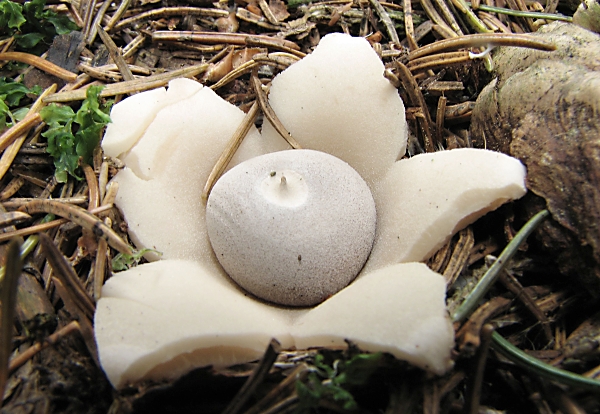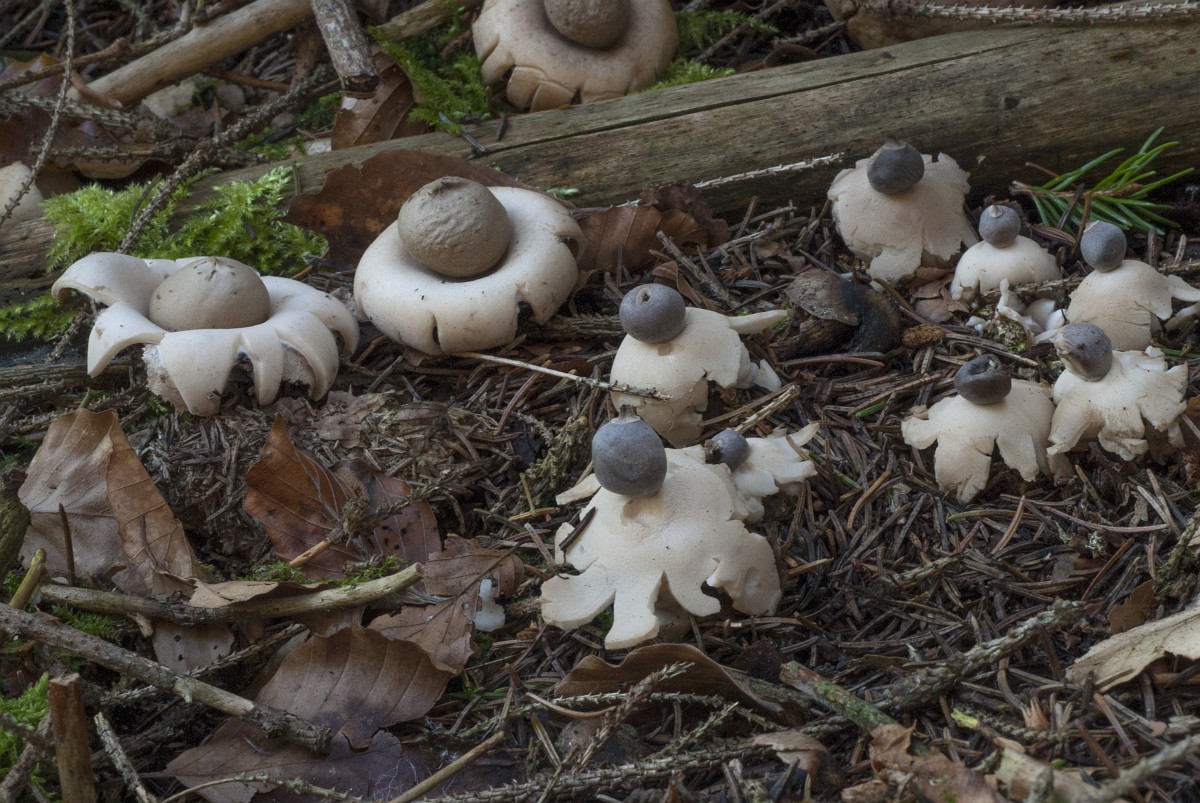Starfire blackhead
Black-headed starfish - Geastrum melanocephalum (Czern.) V. J. Stanek Geastric family Geastraceae
Status. Category 3.
Status in adjacent regions. Listed in the Red Data Books of Kursk (category 3), Lipetsk (4) regions.
Spreading.
Holarctic view. Distributed in Zap. Europe, Central Asia. In Russia: European part, North. Caucasus. In Voronezh Region: Verkhnekhavsky (VGPBZ 4), Novokhopersky (KhGPZ 5), Podgorensky (environs of Kh. Stanovoe 6; VOR: 1) districts.
Description.
Young fruiting bodies spherical, bulbous or pear-shaped, 57 cm high and 46 cm in diameter, with a sharp nose up to 2 cm long, from white to dark brown. When ripe, the peridium breaks into 46 (less often 78) unequal lobes, spread out on the ground or bending and raising a spherical, dark, powdery, slightly fibrous lump above the ground.
Exoperidium is thick-fleshy, leathery outside, elastic, three-layered, tightly fused with endoperidium and bursting with it; thickening in the lower part, passing into a clavate columella. Endoperidium quickly disappears and exposes the glebe. The gleba is spherical at first, dense, brown, dark brown when mature, almost black, decaying. Spores are globular, acute or obtuse or warty, brown, 45 µm in diameter.
Features of biology and ecology.
Fruiting bodies are formed in June October, sporadically, with an interval of several years ("meteoric" type of development). Humus saprotroph. Grows in deciduous forests, on soil, in shaded areas.
The number and tendencies of its change.
Fruit bodies are rare, not annually, in single specimens. The number is decreasing due to intensive disturbance of habitats.
Limiting factors.
Features of the developmental biology of the species, narrow ecological amplitude; disturbance of habitats under the influence of anthropogenic factors (deforestation, destruction and change in the structure of forest litter).
Recommendations for the conservation of the species in natural conditions.
Compliance with the conservation regime in existing protected areas, constant monitoring of the state of known populations, the search for new locations and the organization of their protection.
Sources of information: 1. Sosin, 1973; 2. Garibova, 1991; 3. Schwartzman, 1970; 4. Afanasyev, 2007; 5. Rtishcheva, 2005; 6. Afanasyev, 1995. Data from the mycological collection of the Herbarium VOR: 1. A. A . Afanasyev (1995). Compiled by: A. A. Afanasyev, A. I. Rtischeva; photo: M.V. Ushakov.
Zvezdovik (geastrum)
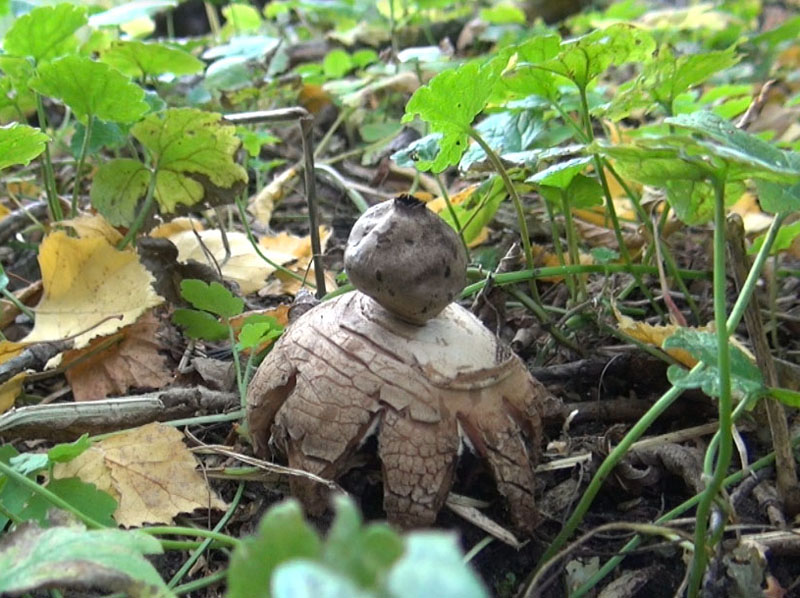
Seeing an asterisk on which something round sits, even experienced mushroom pickers are amazed, starting to wonder if such a miracle has flown into the Russian forest from another planet. Zvezdniks are rare mushrooms, and people don't always notice them - simply because of their focus on the classic image of a mushroom as a cap on a stem. A round ball on an asterisk does not fit into the usual concept, and the gaze of the miners slips by. Meanwhile, starfish are some of the most unusual mushrooms in the world. There is no need to collect them, but it is interesting to stop and admire this freak of nature.
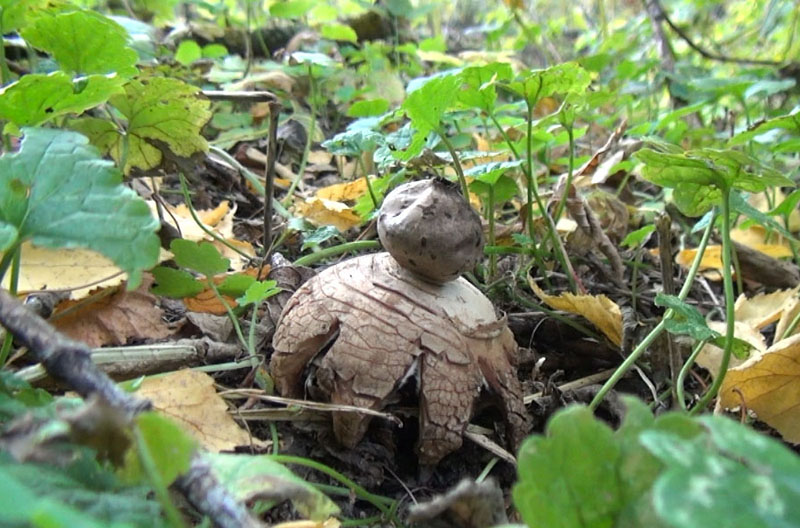
The Latin name for starfish - Geastrum (geastrum) - connects two roots: "earth" and "star". Starfishes settle on dense leafy lining or vegetation debris. Referring to saprotrophs, starfish close the circuits of the cycle of substances, processing plant organic matter and returning inorganic compounds to the soil, which can be used by living trees as nutrients.
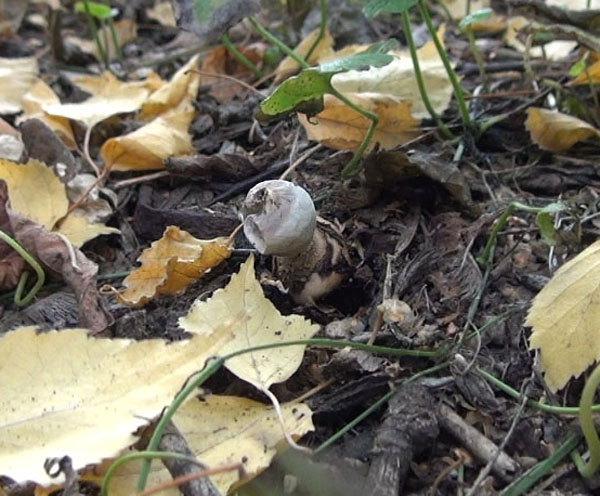
The young mushroom has a peculiar shell. As it grows, it breaks, forming a stellate structure that lifts the spore sac. It turns out an exotic mushroom, which is difficult to recognize as such.
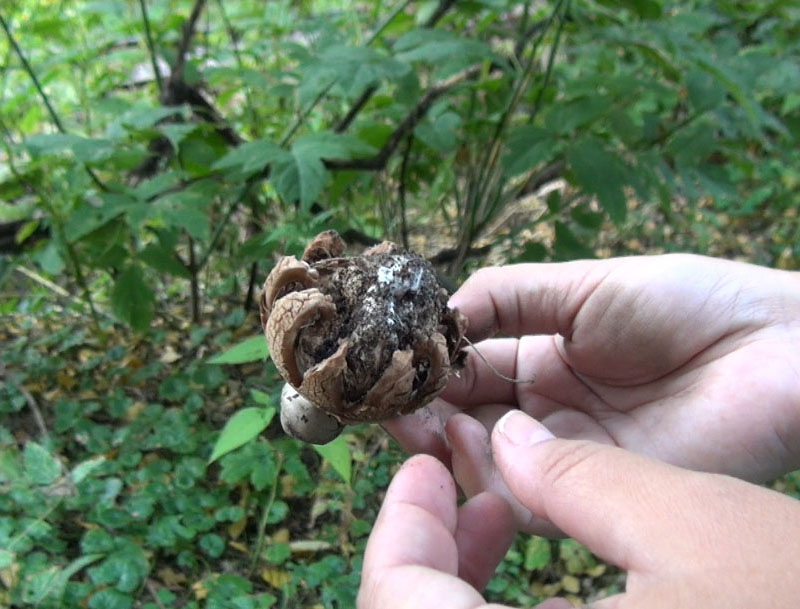
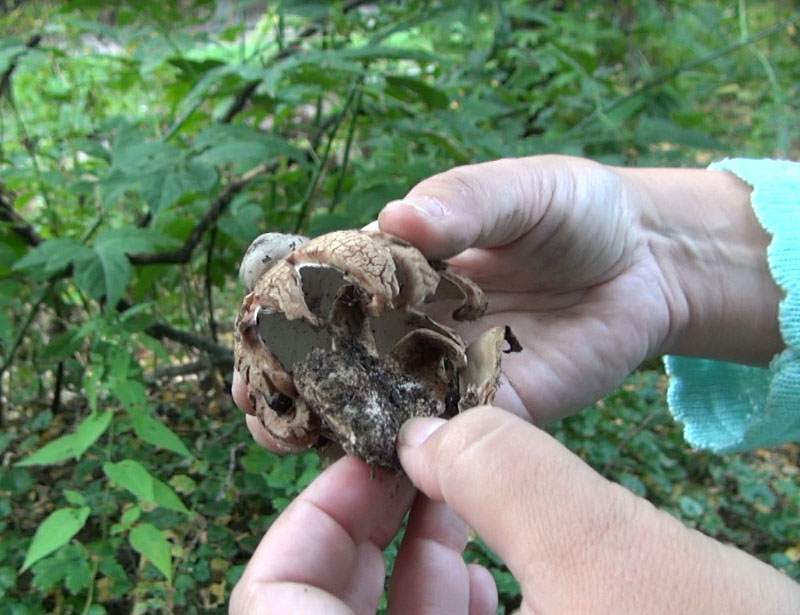

Celebrities live all over the world and almost everywhere.Some species prefer open and high places under deciduous trees, others choose dark coniferous thickets, there is. Colonies of fungi can exist in one place for many years, since spores are well preserved in a dense round sac on top. Often, in place of one mushroom, the next one sprouts. And if you find one starlet, several more can be found within a radius of several meters.
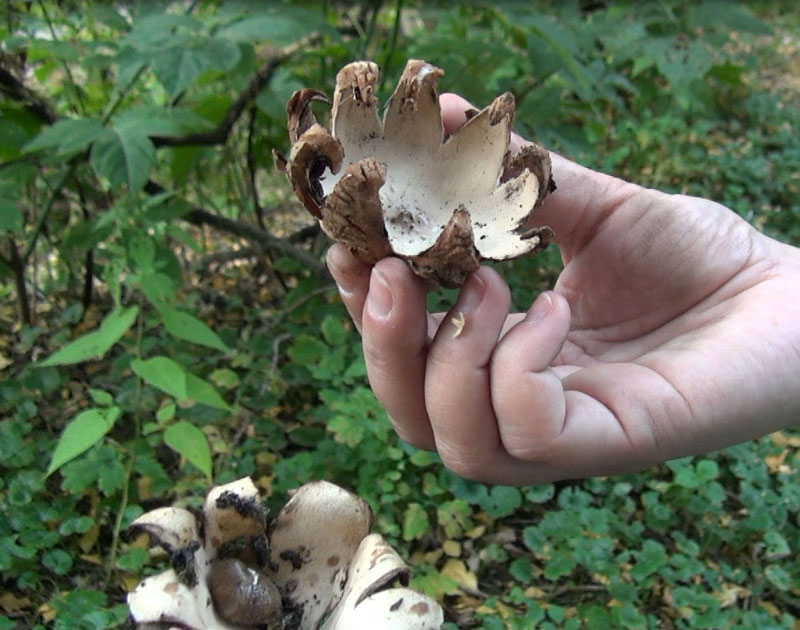
Some species of starfish are edible at a young age; the fruit body with a shell can be eaten even raw. But the expediency of such eating, generally speaking, is questionable. And the definition of the species is a difficult task even for specialists. It's easier not to risk leaving the stars in their place.
The stars shown in the pictures in this post were not found in the forest or even in the park. They were almost accidentally discovered in the city, during a leisurely walk along an uncrowded path along the industrial zone. From the pictures on the Internet, I identified the mushroom found as striped starfish. Its distinguishing feature is the characteristic cracked stripes on the asterisk. But it is possible that this is a fringed starfish or some other representative of the family.

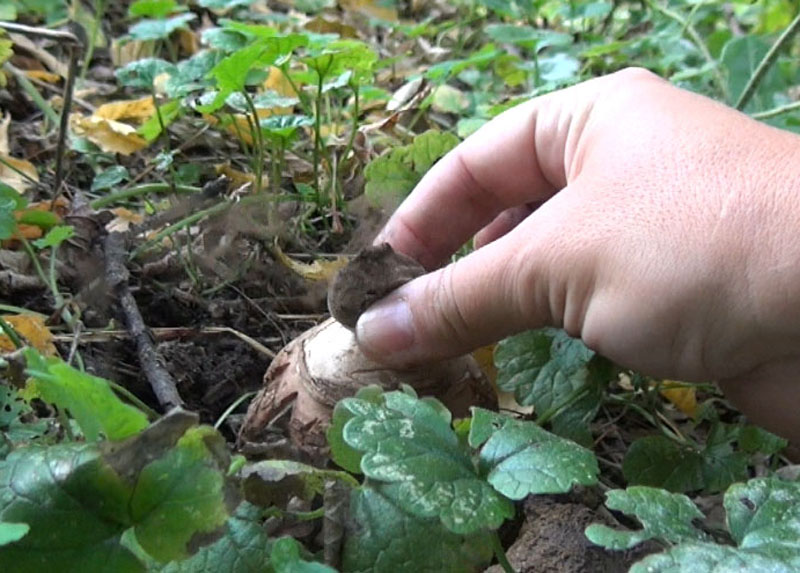
Zvezdoviks are essentially raincoats, the round pouch at the top contains spores, and just like other ripe raincoats, you can “puff” on them. The brown "smoke" coming out from above is the spore.
Text - Lazy Summer Resident, photo - Anton Ageev
Geastrum triplex
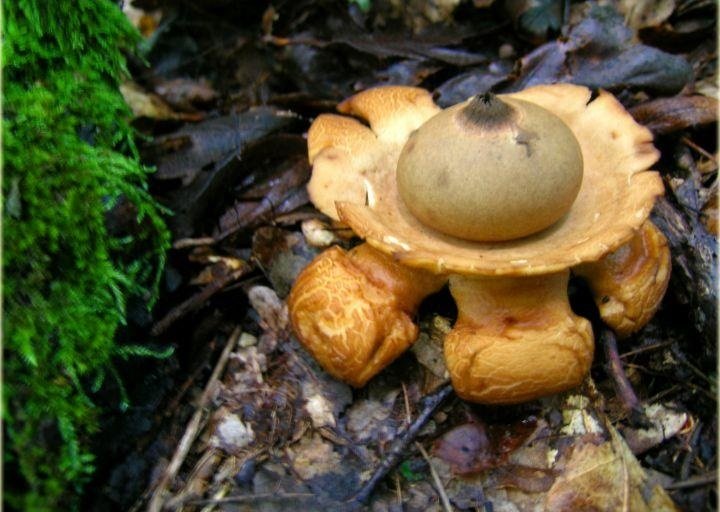
Fruit body:
in a young mushroom, the fruiting body is rounded with a sharp tubercle. The height of the fruiting body is up to five cm, the diameter is up to 3.5 centimeters. As the mushroom matures, the outer layer breaks into several thick lobed parts, beige and terracotta shades. The diameter of the unfolded fruit body can reach 12 centimeters. The central part of the inner layer is retained as a cupped collar under the slightly flattened sessile outer layer.
In the upper part of the endoperidium, a hole is formed through which the ripe spores enter the outside. In some star-shaped fungi, a slight depression may appear around the peristome, which is somewhat different from the rest of the outer layer. This area adjacent to the opening is called the courtyard.
At Geastrum Triple, this courtyard is quite wide and clearly defined. The courtyard is surrounded by a ragged hole, which is tightly closed in young specimens. If the young fruit body is cut exactly in the middle, then in its center you can find a light zone resembling a column in shape. The base of this column rests on the lower part of the fruiting body.
Disputes:
verrucous, globular, brown.
Pulp:
The flesh of the inner layer is fragile, juicy and soft. In the outer layer, the flesh is denser, firmer and leathery. The inner part of the endoperidium can be fibrous and whole, or powdery, consisting of capillation and spores.
Spreading:
Geastrum triple is found in deciduous and mixed forests. It grows among fallen needles and leaves. Fruiting in late summer and autumn. Often the fruiting bodies persist until the next year. The mushroom is cosmopolitan. This species usually grows in large groups, sometimes even in hundreds of specimens. It is often possible to observe fungi at different stages of development at the same time.
Edibility:
not consumed.
Similarity:
Due to its characteristic triple appearance, the fully open fruiting bodies of this fungus are difficult to mistake for related species. But, at the initial stage of opening, the mushroom can be confused with other large starfish.
Notes: a rather large and fleshy mushroom. The fruit body of a young mushroom has the shape of a bulb; as it ripens, the body opens up in two layers of the shell. The outer layer unfolds in a star-like manner. The inner layer forms a collar around the central ball. Through a hole formed at the top of the ball, ripe spores are released outside by rain and wind.In some cases, a cup does not form around the endoperidium, or it is not clearly expressed, which violates the characteristic appearance of this triple starfish.



